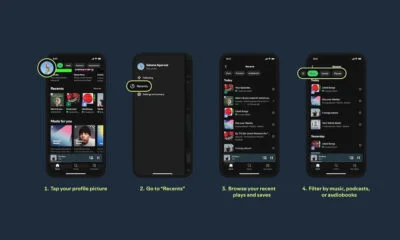News
Why Organizations Need To Focus More On Combating Network Brownouts
Network brownouts can lead to reduced customer satisfaction, loss of revenue, and damage to an organization’s reputation.

It’s safe to say that most people recognize that network blackouts and outages are a huge problem that needs to be addressed as quickly and effectively as possible. And while we’ve made great strides in that regard, there’s another major issue that isn’t getting as much attention as it should. The issue in question is network brownouts.
According to this report from Juniper, persistent network brownouts are the third biggest risk IT organizations face today, only behind total outages and security breaches, and rather worryingly, most brownouts (61%) are not detected by IT teams as the monitoring mechanisms are often only equipped to detect total outages. What’s more, the average annual cost of brownout-induced downtime alone is estimated to be $600,000 per organization.
Black? Brown? What’s The Difference?
An outage, or blackout, refers to a complete lack of availability of a network. A brownout, on the other hand, refers to a period where the network is running, albeit at a significantly reduced level of performance, hurting the overall quality of service. Network brownouts are also known as “unusable uptime”.
Network brownouts can make an organization’s products or services frustrating to use, leading to reduced customer satisfaction and even an overall decline in employee productivity. These issues almost always result in loss of revenue, and persistent brownouts can also greatly damage the organization’s reputation.
So What Causes A Network Brownout?
1- Overload
As with network outages, an overload is usually the main cause of a brownout. A network overload occurs when the traffic flowing through the network is much higher than it is equipped to handle. This overwhelming traffic can result in reduced availability of network resources, leading to low bandwidth and high latency. Network overloads can have several causes, including increased traffic, faulty equipment, and even DDoS attacks.
2- Faulty Or Legacy Equipment
It is an absolute must for organizations to keep monitoring their network infrastructure to isolate any weak points. These weak points may exist in the form of faulty or even sometimes obsolete equipment. While network components like routers or switches are quite reliable, failures can still occur. These failures could disrupt the flow of traffic through the network, resulting in more congestion, which could cause a brownout. And if there’s a failure in a critical network component, this could lead to a total outage.
Any form of obsolete legacy equipment could also cause a brownout as these devices may not be able to cope with ever-increasing network demands.
3- External Network Issues
In some cases, brownouts can also be caused by issues outside an organization’s control. For example, ISP networks are also prone to the same issues organizations face. Failures in an ISP’s network infrastructure could also have a significant impact on an organization’s network and quality of service.
How Can Organizations Avoid Network Brownouts?
1- More Effective Monitoring Solutions Are A Must
Most brownouts aren’t detected by IT teams. Rather, it is the customer or another employee that is usually first to detect and report such issues. When it comes to issues that affect network operations, responding quickly is key. Quick detection means quick resolution.
By detecting issues instantly, IT teams can resolve them swiftly and ensure they don’t plague the network for long. It is imperative for organizations to implement better monitoring solutions that can detect even slight drops in performance. This ensures quick resolution of issues, helping IT teams keep their networks up and running with minimum disruption, resulting in an overall increase in network quality.
2- Keep All Hardware Up To Date
As network demands continue to rise, it is important to prepare for increased requirements by investing in the latest and greatest network infrastructure. In an era where organizations across all verticals are increasingly reliant on IT and the availability of network resources for their services, they simply cannot afford to cut corners when it comes to their network infrastructure.
3- Optimize Bandwidth Usage
Organizations should ensure that they are wisely using the available network resources and bandwidth without putting too much strain on any particular server or network component.
This can help eliminate or at least limit congestion, which is the main cause of both brownouts and blackouts, depending on severity.
Network segmentation and load balancing are some of the most effective ways for organizations to optimize their bandwidth usage.
Network segmentation involves splitting the network into distinct components based on the role they play. These segments (also known as subnets) are isolated from the rest of the network and can function independently. Network segmentation enables organizations to prioritize and allocate network resources efficiently to different network segments depending on how critical they are to the overall functioning of the network. Moreover, issues with one segment are unlikely to spill over to other segments, reducing the likelihood of a brownout.
Load balancers enable organizations to evenly distribute traffic across the network to avoid overwhelming a single server or component with too much traffic. This can prevent bottlenecking and can smooth the flow of traffic throughout the network.
4- Implement Network Redundancy
Implementing redundancy in the network infrastructure is easily one of the most reliable ways to ensure smooth connectivity and stable performance. Organizations can either implement network redundancy by creating alternate paths for the flow of traffic within the network or use redundant hardware components that can automatically take over in case of a failure. Ultimately, these redundant systems can serve as an effective backup when facing issues with primary network components. These redundant components help with creating an effective failover mechanism, significantly reducing the frequency and severity of a brownout.
Takeaway
With organizations becoming increasingly reliant on IT, not just for their services, but also for their internal processes and operations, it’s safe to say they simply cannot afford any disruptions. Time is money and downtime is money lost. Organizations must invest in robust and reliable network monitoring solutions that enable them to instantly detect any issues in their network infrastructure so they can rectify them as soon as possible.
News
Samsung Smart Glasses Teased For January, Software Reveal Imminent
According to Korean sources, the new wearable will launch alongside the Galaxy S25, with the accompanying software platform unveiled this December.

Samsung appears poised to introduce its highly anticipated smart glasses in January 2025, alongside the launch of the Galaxy S25. According to sources in Korea, the company will first reveal the accompanying software platform later this month.
As per a report from Yonhap News, Samsung’s unveiling strategy for the smart glasses echoes its approach with the Galaxy Ring earlier this year. The January showcase won’t constitute a full product launch but will likely feature teaser visuals at the Galaxy S25 event. A more detailed rollout could follow in subsequent months.
Just in: Samsung is set to unveil a prototype of its augmented reality (AR) glasses, currently in development, during the Galaxy S25 Unpacked event early next year, likely in the form of videos or images.
Additionally, prior to revealing the prototype, Samsung plans to introduce…
— Jukanlosreve (@Jukanlosreve) December 3, 2024
The Galaxy Ring, for example, debuted in January via a short presentation during Samsung’s Unpacked event. The full product unveiling came later at MWC in February, and the final release followed in July. Samsung seems to be adopting a similar phased approach with its smart glasses, which are expected to hit the market in the third quarter of 2025.
A Collaborative Software Effort
Samsung’s partnership with Google has played a key role in developing the smart glasses’ software. This collaboration was first announced in February 2023, with the device set to run on an Android-based platform. In July, the companies reiterated their plans to deliver an extended reality (XR) platform by the end of the year. The software specifics for the XR device are expected to be unveiled before the end of December.
Reports suggest that the smart glasses will resemble Ray-Ban Meta smart glasses in functionality. They won’t include a display but will weigh approximately 50 grams, emphasizing a lightweight, user-friendly design.
Feature Set And Compatibility
The glasses are rumored to integrate Google’s Gemini technology, alongside features like gesture recognition and potential payment capabilities. Samsung aims to create a seamless user experience by integrating the glasses with its broader Galaxy ecosystem, starting with the Galaxy S25, slated for release on January 22.


























